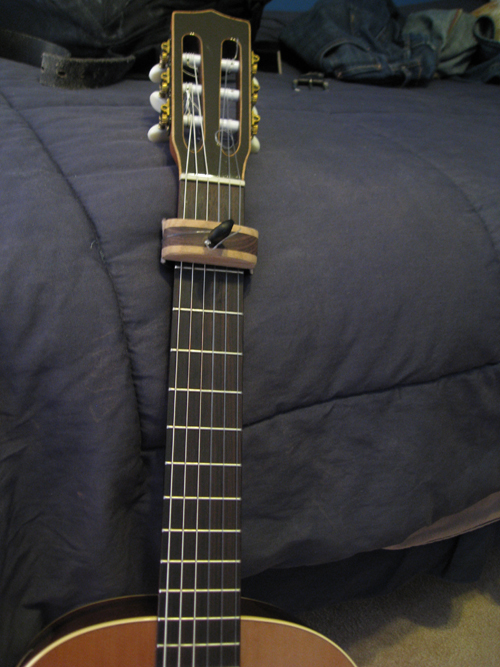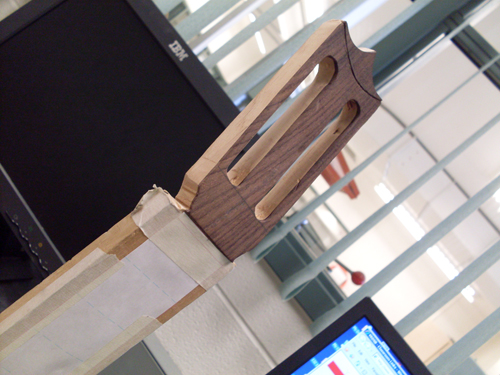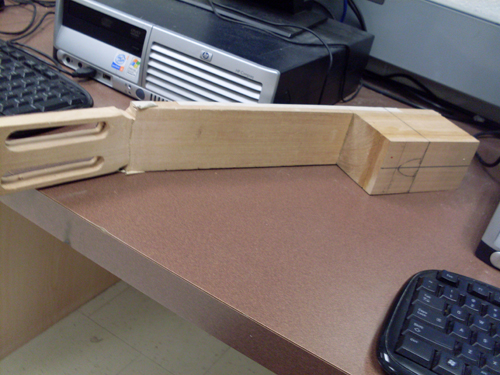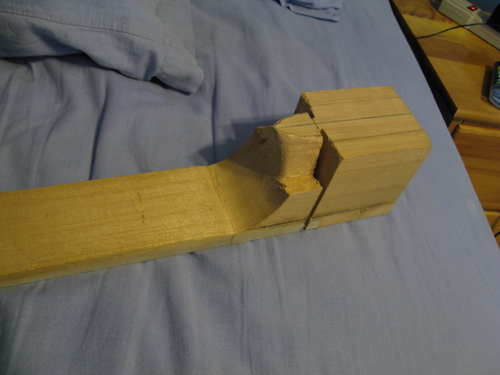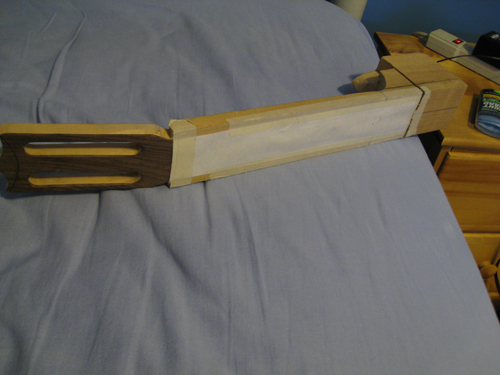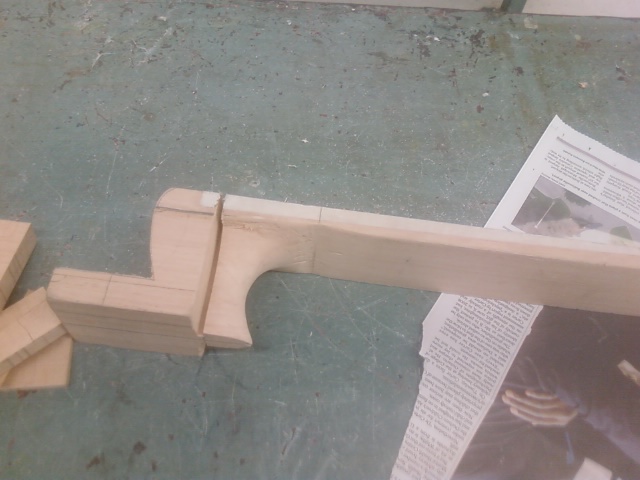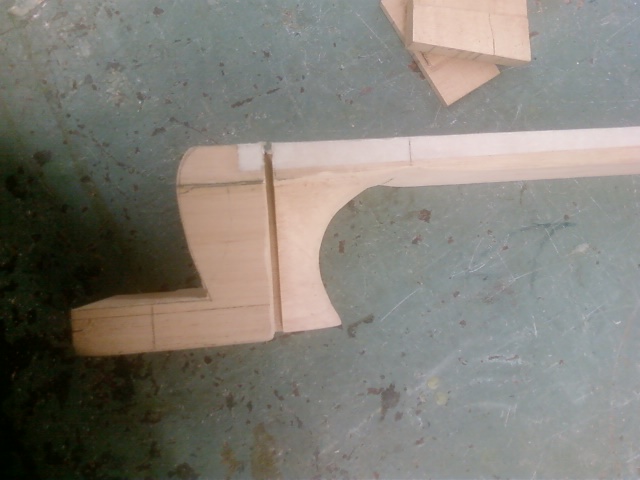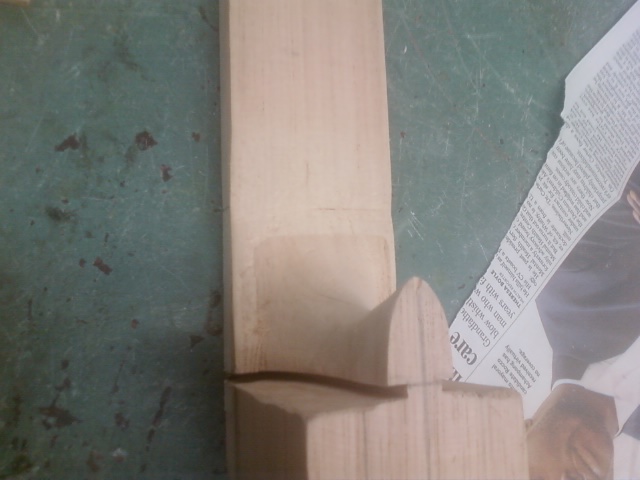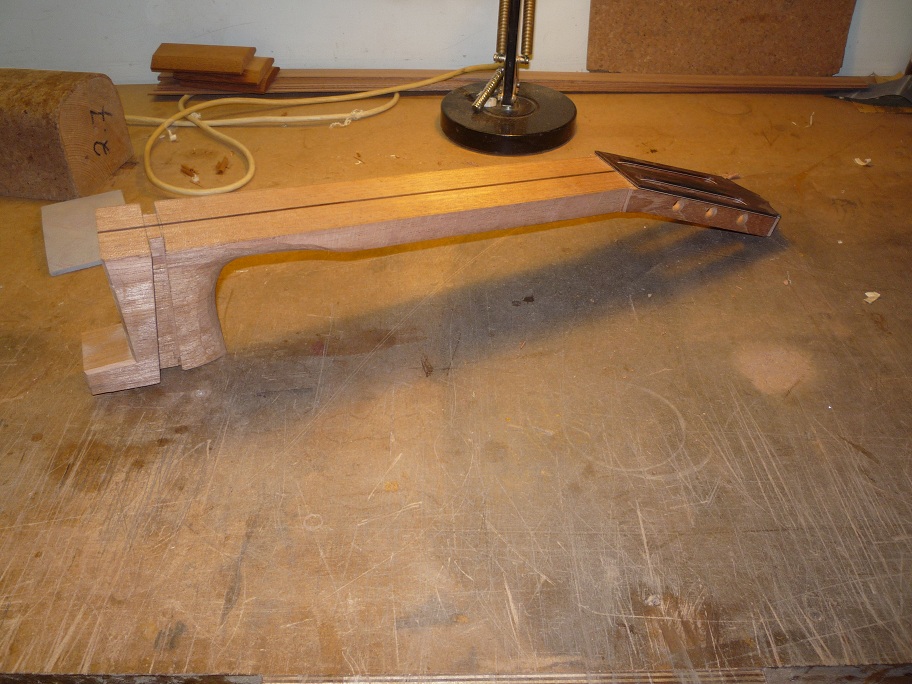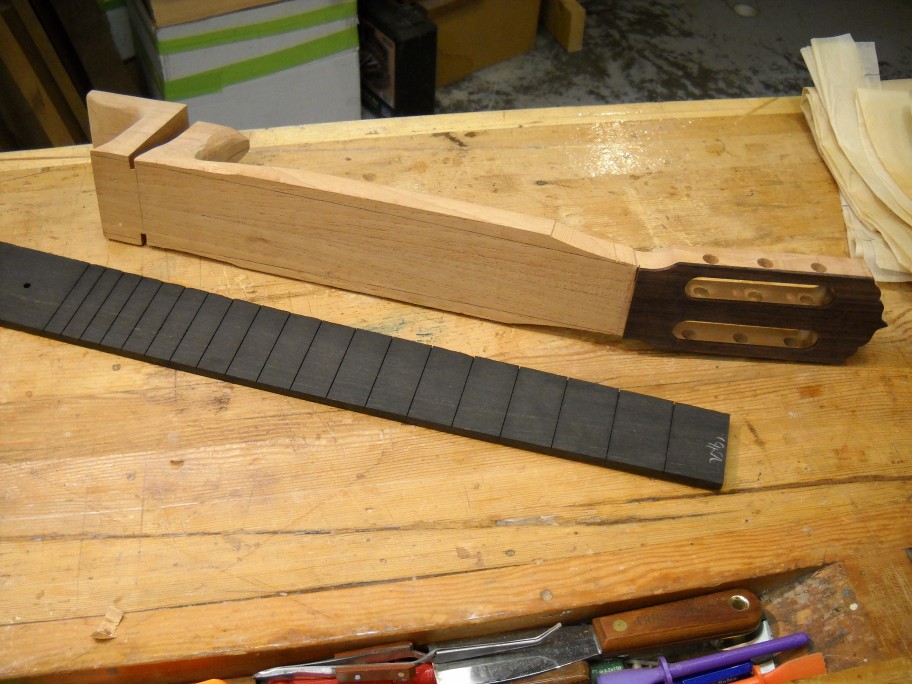|
estebanana -> RE: The challenge issued by my school teacher (Mar. 8 2011 15:52:09)
|
Here is how you lay out a peg head for wooden pegs:
Make a half pattern of your peg head, from brass, paper, thin plex or whatever will hold a mark.
Take a wooden peg, these are viola pegs and measure the diameter of the tip.
Draw the peg head on paper using the pattern and lay out the distance between pegs using the center of the peg. Then add the width of the peg to the drawing and adjust the pegs to be a nice distance from the edge of the peg head.
here are some measurements, but don't take mine at face value, prove them out for yourself.
Distance between pegs center to center: 35mm
Distance from peg center to edge of peg head: 12 mm
Distance from lowest E pegs top back of nut: 35mm
Now with that rough information and the angles at which your peg head sides expand out from the nut, you can plan your string excursion from the inner side of each peg to the nut.
Lay out the peg positions on YOUR peg head pattern and play with the placement of the string paths to the nut until you have a design in which the strings don't get in each others way and it looks pleasing to your eye. So it needs to look nice and it needs to function. Do all this on paper several time before you commit to it.
Then you'll go to a drill press and make a pilot hole with a drill bit. A 1/4 inch brad point is a good bit to choose. But do the lay out carefully, carefully.
|
|
|
|
